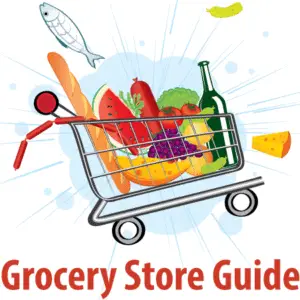Having trouble finding honey in your local grocery store?
Read on to find out which aisle you can locate this tasty spread and what you should really be looking out for before making a purchase.
Where to Find Honey in the Grocery Store? (What Aisle)
In most grocery stores, honey is usually located on the same aisle as bread and other spreads such as jam and peanut butter. You may also find it in the baking section next to sugar and flour.
Every grocery store is different, so keep reading to find out where exactly the honey will be in certain stores.
Grocery Stores that Sell Honey: Let’s Walk You Down the Aisle
We all use honey differently. Some of us like to spread it on our toast in the morning or drizzle over fresh fruit and yogurt. Others add it to hot water or tea as a sweetener.
Don’t waste your time asking an employee for help. We’ve got you covered!
Safeway – You can find honey in Safeway on aisles containing bread, jellies, and peanut butter.
Walmart – Walmart stocks honey next to condiments and spices.
Whole Foods – Look for honey on any aisle that has flour and sugar. Many people like to use honey as a sugar substitute, so some stores place honey on baking aisles.
Please note, this may differ slightly in your local store, but they definitely all sell honey. So no need to panic!
Grocery Store Honey: Which One is Best?
Honey, in its purest form, is full of immune-boosting antioxidants that benefit everyone. However, the thought of digging into a beehive is quite a frightening thought. Don’t you think?
Therefore, the best way to get your hands on pure honey is by popping into your local store and opting for one of these.
Manuka Honey
Native to New Zealand, Manuka Honey is full of active compounds that provide antibacterial properties.
Genuine Manuka Honey will always have a UMF (unique manuka factor) trademark on the label to prove its authenticity.
Celebrities such as Novak Djokovic, Kourtney Kardashian, and Ed Sheeran are all fans of the superfood.
Honey Feast Acacia Honey
Sweet tasting with a hint of vanilla, acacia honey is commonly used for baking desserts due to its natural sweetness.
It is – like all honey- a natural anti-inflammatory and can be used to aid coughs and sore throats.
Acacia honey is made from nectar sourced from the black locust tree, which is native to the United States.
Ys Eco Bee Farms Raw Honey
This organic, unfiltered, raw honey is full of cleansing properties that can help with skin problems such as acne.
Raw honey can be relatively high in price, but Ys Eco Bee Farms products are reasonably priced.
The thick texture of raw honey makes it perfect for spreading onto a bagel or a fresh piece of bread.
Do Grocery Stores Sell Different Types of Honey?
There are over 300 varieties of honey, and obviously, most stores would be unable to stock every single type. But yes, most stores provide different kinds of honey with prices ranging from low to high.
Cheaper brands are perfectly fine to consume but do not contain many health benefits as they go through a process called ‘ultrafiltration’ (keep reading to find out what this is).
Raw, organic, and local honey are popular among consumers and are available to purchase all year round. If you are buying honey purely for health benefits, then any superfood store will stock it.
Is Grocery Store Honey Fake- Be Careful
That sounds stupid. Why on earth would any store want or feel the need to sell honey that is fake, right?
Many manufacturers add sweeteners such as high fructose corn syrup or rice syrup in a bid to lower their costs and boost profit. The product is then still sold as ‘pure honey’ when actually it isn’t. This is misleading to consumers and is technically fraudulent.
Consumers pay more for good quality honey as it contains certain enzymes that benefit health.
Consuming honey has been known to help with arthritis pain, lower blood pressure and also help to decrease cholesterol.
Manuka honey, for example, is high in price and was once highly desirable due to a trend in celebrity culture.
So, the answer is -sometimes. Sometimes, the honey may not be what the label claims. If the back of the bottle (or jar) has a long list of ingredients, it is considered to be ‘fake honey.’
Fake Honey in Grocery Stores: What You Should Really Know
Honey laundering, also known as ‘fake honey,’ is the process whereby cheap additives such as sweeteners and water are added in order to bulk up honey products and effectively sell less honey for more profit.
In 2013, Groebs Farm, based in Michigan, admitted to paying millions for laundered honey. Honey laundering is potentially a health risk. Also, some Chinese honey has been found to contain illegal antibiotics linked to cancer.
Fake honey is misleading and can still be advertised as pure honey. However, unless you stop to read the ingredients on the label, you would never know.
Filtration is the process whereby honey is filtered to get rid of bee parts and other unwanted bits but still maintains all the goodness consumers look for when purchasing.
Honey laundering uses a process called ‘ultrafiltration’ whereby the product is concentrated at such a high level that most of the beneficial pollen is removed.
Ultra-filtered honey has an increased shelf life and is therefore deemed more profitable to businesses.
Conclusion
To wrap this up, we hope this guide will help you in your quest to not only find honey in your local grocery store but also find the best type for you.
If you want some good-quality honey, always remember to get those glasses on and have a good read of the ingredients.
Smaller grocery stores may even have a good business relationship with local beekeepers, so don’t be afraid to ask questions.

